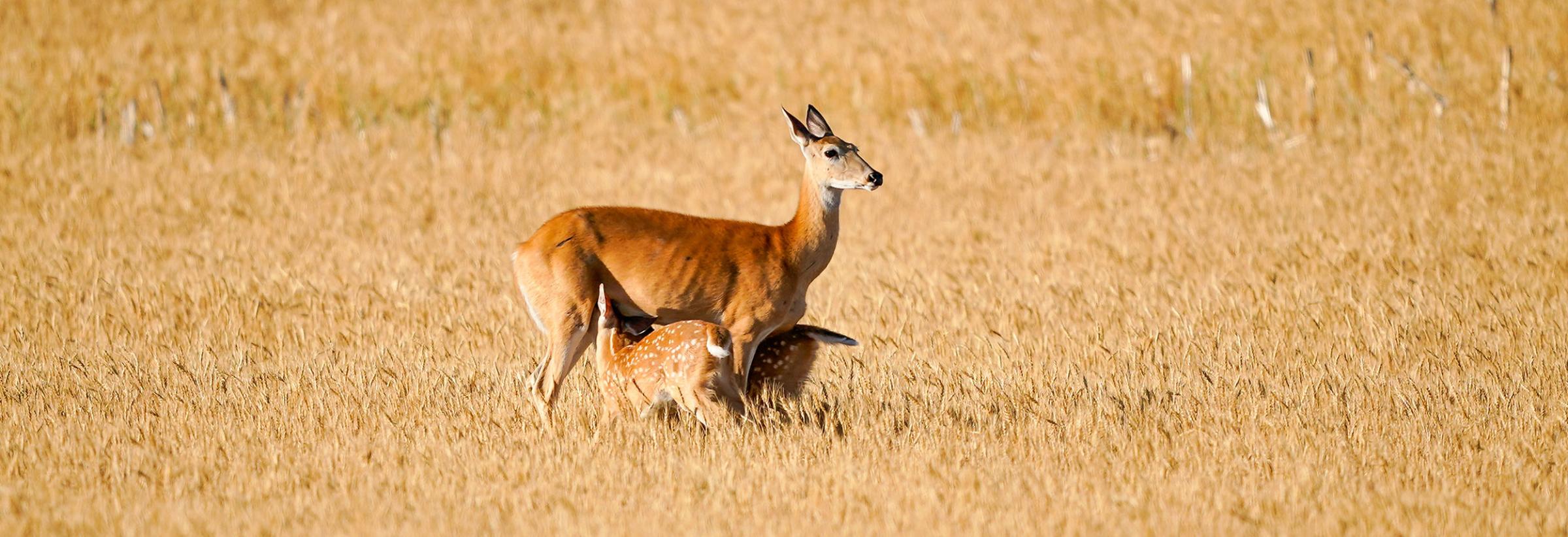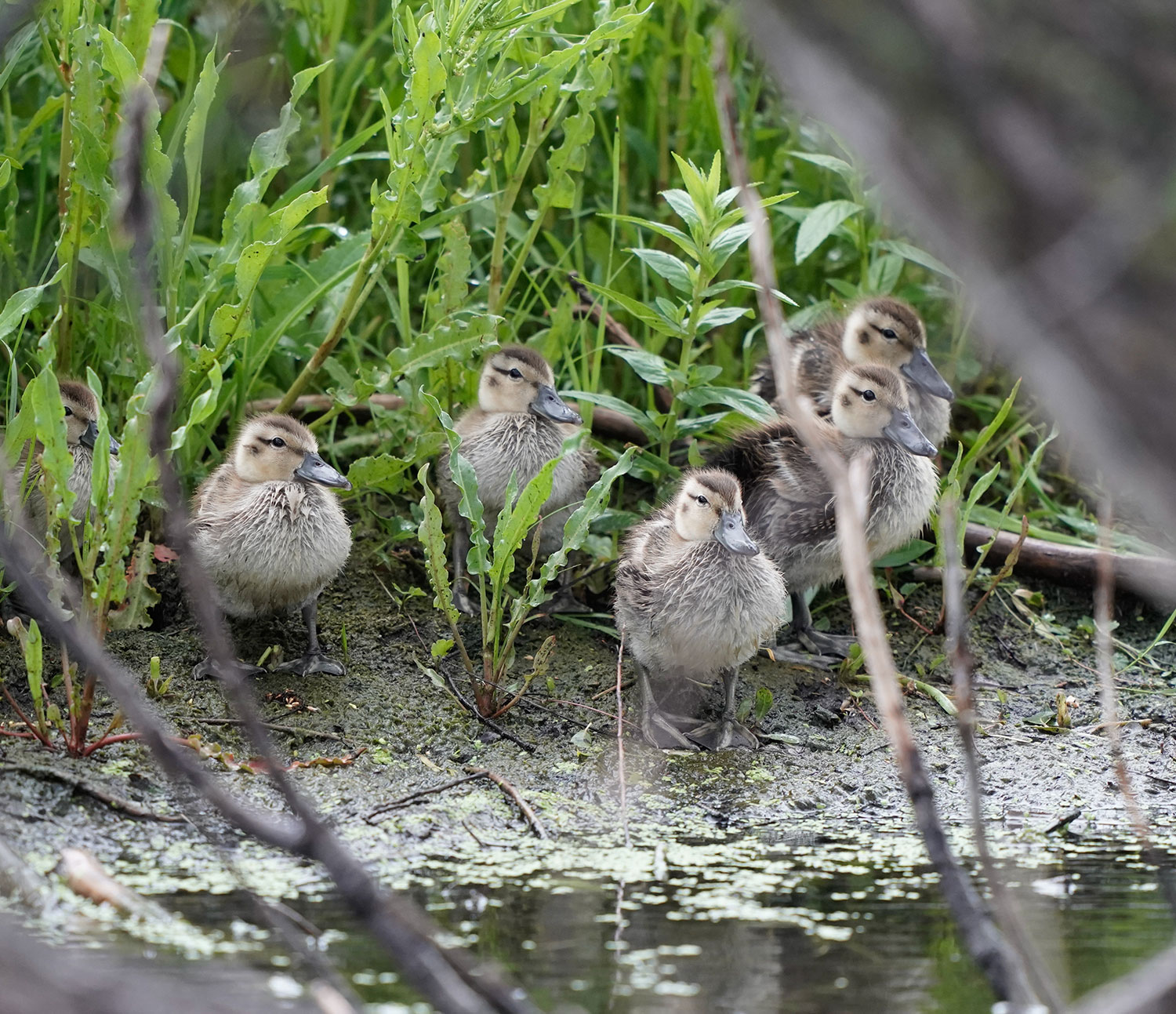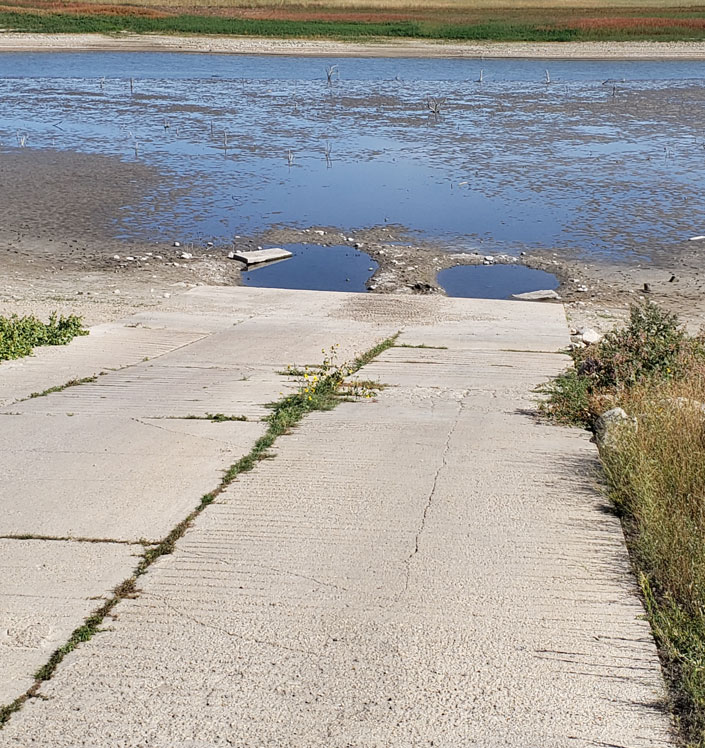
The Fallout of Drought
A decade ago, with high water over much of the state from the Devils Lake basin to the Missouri River corridor and in between, North Dakota was as wet as it had been in more than a century.
Crop fields were flooded. High waters washed out roads. The lives and livelihoods of many were challenged. Flood waters from Garrison Dam south along the Missouri River that inundated homes, infrastructure of river-bound communities and an untold number of acres of wildlife habitat, was called a 500-year event.
Today, following a hot, dry summer that featured little precipitation and a record number of days over 100 degrees, farmers, ranchers and wildlife managers are wondering if there is an end in sight.
“It’s a pretty bad drought … realistically, we’ve been looking at almost two years of it,” said Casey Anderson, North Dakota Game and Fish Department wildlife division chief. “Because we're coming on a second year of this thing, it really starts to add up.
“If you get one year of drought, a lot of stuff out there, whether it's wildlife or vegetation, deals with that fairly well in this kind of country,” he added. “But when you start getting into multi-year droughts, things start to get really taxing across the landscape for wildlife, habitat, agriculture producers … everybody really.”
Life on the Northern Plains, if you hang around long enough to experience the unpredictable weather ups and downs, will stagger even the hardiest.
Some of the fallouts for wildlife during a drought, Anderson said, is a decline in habitat, which means lower quality food and scarce to lower quality water sources.
“Because of this, the critters out there are unable to thrive like they normally would in spring and summer when they add fat and have large broods with the good available nesting cover,” he said. “While it doesn’t seem like it now because there are grasshoppers everywhere, we had pretty low insect numbers in spring. During that time in the spring is when pheasant and grouse chicks are hatching, they depend on a high protein diet of insects, and they just weren't there.”
“That's maybe going to improve the quality of some of the food sources out there for wildlife as they're trying to put on reserves to go into winter,” Anderson said. “A few more of those rains would help give us some sort of soil moisture. The more rain we can get now, the better off we'll be in the spring, regardless of what the winter does to provide some nesting cover and other benefits.”

Waiting to See What Winter Brings
While Greg Power, Department fisheries chief, describes the drought as a “tough one,” he’s quick to take the edge off any doom and gloom talk concerning North Dakota’s fisheries.
“We got through the summer without really any substantial fish kills,” he said. “Given how hot and dry it was, we totally expected to have half a dozen, 10 lakes with some type of, maybe even substantial kills, especially pike lakes. But we didn't see it, so that's good news.”
Then again, depending on what happens this winter, his outlook may change.
“What often controls our fishery populations is winterkill, especially in those marginal waters, and we're set up for some serious winterkill potential if we get snowpack, especially if we get a snowpack in December and it stays,” he said. “That early snow can really challenge a lot of our lakes. It's a double-edged sword. We need the moisture; we need that runoff come next spring and oftentimes it comes in the form of snow. Even under the best-case scenario this winter, we're going to lose a few lakes. Worst case scenario … Well, only time will tell.”
For the most part, North Dakota’s fishing waters were impacted equally across much of the state.
“We’re down, as a general rule, 2 to 5 feet in our lakes from where we were two years ago,” he said. “So, if the lake only has a maximum depth of 12 feet, that becomes very concerning.”
If 2022 is a continuation of 2021, Power expects the state to possibly continue to feature hundreds of managed fishing waters. But in a couple of years if conditions persist, things could change significantly.


